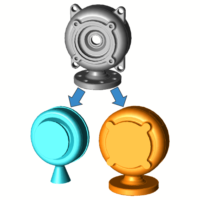
by Brad Strong | Jun 6, 2016 | Blog, CAD Repair, What's New
TransMagic’s MagicHeal has the ability to take a CAD model such as this discharge casing (courtesy of Nayla Miana Luiz, as seen on GrabCAD) and perform ‘CAD Inner and Outer Volume Separation’, or split the geometry out into inside and outside volumes (see figure at right). Generating inside and outside volumes could be useful for generating precise estimates of surface finishes or coatings, or in mold development (where each volume becomes a core body). In the process of generating these solid bodies we remove various features, so this is also a tool for defeaturing a model. There are various reasons you might want to remove features from a model,...
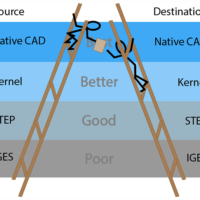
by Brad Strong | Jun 1, 2016 | Blog, CAD Performance, CAD Repair, CAD Translation, What's New
In The CAD Format Ladder Part 1 we looked at using the CAD Format Ladder to attain the end-goal for translation: high-quality geometry, a water-tight solid if possible, and PMI data if it is included. You can access The CAD Format Ladder Part 1 here. In The CAD Format Ladder Part 2, we’ll look at some specific scenarios. Native, Kernel, and Neutral Formats For clarity, we will define “Native Formats” as the format that is written by default by any given CAD system; for example, CATIA uses .CATPart and .CATProduct, and SOLIDWORKS uses .sldprt and .sldasm as their native formats. The native format is always going to contain more metadata. In addition...
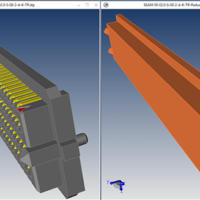
by Brad Strong | May 23, 2016 | Blog, CAD Performance, What's New |
You can use the Reduce Component Filesize technique to drastically improve your large assembly performance; using Boolean operations to consume unneeded features trimmed this 30 MB assembly down to a 3 MB part in just minutes. Simplified parts mean that wait times are reduced, graphics performance is improved, ultimately translating into reduced costs of doing business. To see how TransMagic can simplify your components, watch this short video, or check out the step-by-step instructions below. Video – Reduce Component Filesize Text – Reduce Component Filesize The process of simplifying a CAD component will vary from part to part. Here is one...

by Brad Strong | May 23, 2016 | Blog, CAD Performance, What's New |
A Practical Study on Optimizing SOLIDWORKS Performance through Hardware and Settings Three years ago Josh Altergott and Adrian Fanjoy of Computer Aided Technology, Inc. (CATI) wrote an excellent white paper on maximizing SOLIDWORKS performance, which is a must-read for every CAD user; their detailed analysis found a wealth of performance-boosters which can in many cases be applied to other CAD systems. 6,000 parts, 2.4GB, from 5 hours down to 55 minutes! The study takes a 6,000 part, 2.4GB assembly and runs it through a SOLIDWORKS 2012 benchmark to determine how changing out settings and hardware components will affect performance. Ultimately the CATI team was...
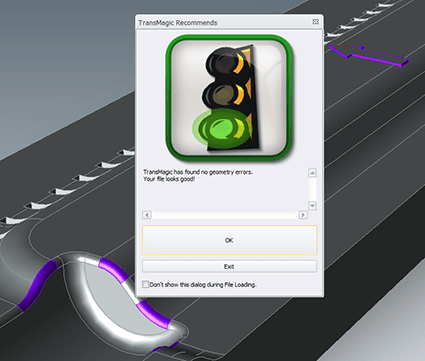
by Brad Strong | May 19, 2016 | Blog, CAD Diagnostics, CAD Repair, CAD Translation, What's New
To see how fast you can repair CAD geometry, and how easily models with missing geometry can be covered with new faces using TransMagic’s MagicHeal, check out this step-by-step walkthough. The process of covering holes and stitching it all together into a watertight solid is quick and easy. Here are the steps (video example at end of this article): STEP 1 – Auto Repair Wizard Start by running the TransMagic Auto Repair Wizard, a tool which automatically validates geometry and repair functions (see figure 1). This automatic CAD repair tool runs Lite Repair which stitches surfaces together as long as the surfaces meet within a specified...
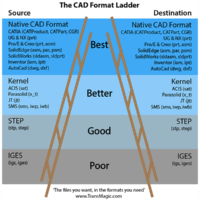
by Brad Strong | May 18, 2016 | Blog, CAD Translation, What's New
The CAD Format Ladder can help you optimize data exchange with your customer or supplier. At TransMagic we often deal with CAD file translation and repair issues. These issues can be minimized by using this rule of thumb: “When sending out CAD data, or receiving CAD data, go as high up on the format ladder as possible.” Your best results: Your best results will come from sending customers or suppliers a format that is as high up on the format ladder as they can read or open. Likewise, you’ll want them to send back data in a format that is as high up on the ladder as you can read. Why is this? Because the higher you go on the format ladder, the better quality...







